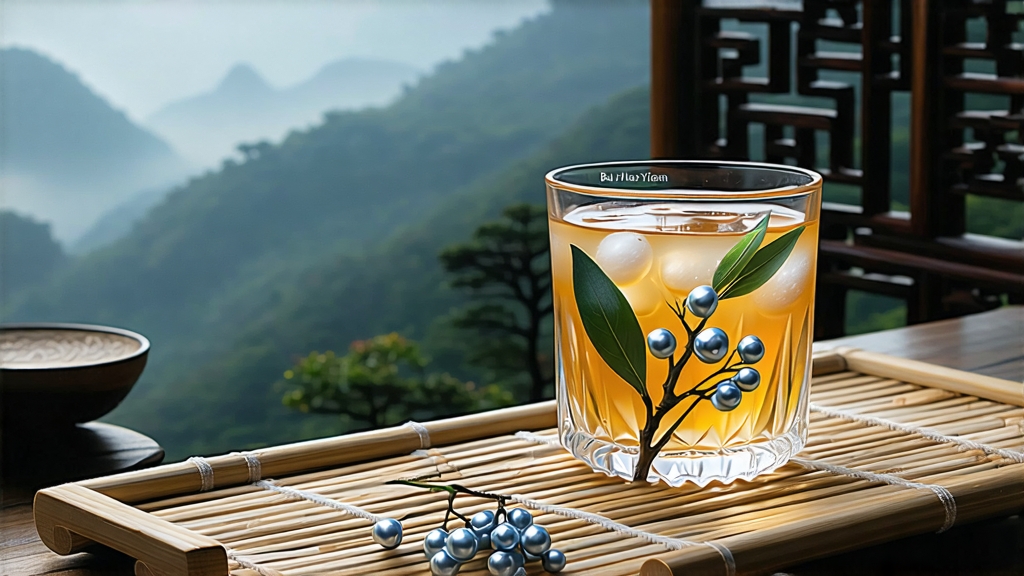
Bai Hao Yin Zhen—“Silver Needle, White Down”—is the quiet aristocrat of Chinese tea. While green tea commands the world’s attention and pu-erh fills investment portfolios, this pale, downy bud drifts like moonlight across a lake, asking only for patience and a clear cup. To meet it properly is to unlearn urgency: the leaf was never burned, never rolled, never twisted into submission. It is simply the first fat bud of spring, coaxed open by mountain air and the slow exhalation of time.
History: from imperial elixir to endangered treasure
The first written record appears in the Song dynasty’s “Treatise on Tea” (1107 CE), where Emperor Huizong praises “white buds of superior fragrance,” reserving them for the palace. By the Ming, Fuding county officials had formalized tribute batches, wrapping the buds in silk and racing them northward along post-roads before the Dragon Boat Festival. When the Qing court fell in 1911, the tribute system collapsed; Silver Needle retreated into village memory, exchanged only between tea-growing clans as dowry gifts. During the 1930s warlords’ era, British planters in Ceylon offered silver dollars for any bud that could survive the bandit-ridden journey to Fuzhou port, but quantities were so meager that London auction catalogues listed it as “unobtainable.” Only in 1963 did the state re-establish protected gardens on the Taimu mountain range, grafting ancient mother trees onto virgin slopes at 600–800 m, where morning fog filters UV into the soft blue spectrum buds adore.
Terroir: why Fuding tastes like fresh rain on marble
Fuding lies on the 27th parallel where the East China Sea’s warm current meets granite peaks. The soil is flinty, rich in potassium and depleted of nitrogen, forcing the tea bush to store amino acids in its terminal bud. Day-night temperature swings of 10 °C slow respiration, lengthening the conversion of starch into soluble sugars that later translate into the famous “sweet dew” finish. Locals insist the bud must be picked before the Qingming festival, when the insect chorus begins; after that, the plant reallocates energy to leaf expansion and the down darkens from moon-white to goose-down grey.
Plucking ritual: one bud, no leaf, no sound
Experienced pickers work in pairs, one kneeling on the dew-wet grass, the other holding a shallow bamboo basket lined with banana leaf. They pluck at 6:30 a.m., while the mountain is still in acoustic shadow—talking is believed to warm the air and wake the enzymes too soon. A single kilogram of Silver Needle contains roughly 30 000 buds, all identical in length (2.5–3 cm) and caliper (4–5 mm). Anything shorter is “sparrow tongue,” longer is “flag spear,” both rejected. The basket must be carried downhill within ninety minutes; if the sun climbs above 30° the bud will “green,” developing grassy notes that no amount of withering can erase.
Craft: the art of doing almost nothing
Unlike other white teas, Yin Zhen bypasses the 48-hour sun-wither stage. Instead, buds are laid on reed trays stacked inside a ventilated barn where mountain wind is ducted through charcoal-cooled corridors. For 36 hours the moisture drops from 75 % to 18 % while polyphenol oxidase remains active but restrained, creating the pale apricot liquor and hint of lychee that connoisseurs prize. No machine touches the bud; every thirty minutes a master quietly rotates the trays, listening for the faint rustle that signals water migration. When a bud snaps cleanly between fingernails, it is moved to a charcoal oven at 40 °C for twenty minutes—just long enough to fix the aroma, not to cook it. The final product retains 8 % moisture, ensuring decades of graceful aging if stored below 20 °C and 50 % humidity.
Grades & micro-lots
Imperial Grade: harvested from 120-year-old wild trees on Taimu’s north face, down so dense it looks frosted; yields a liquor that tastes like mountain spring water infused with pear blossom.
Premier Grade: buds from 40-year-old bushes, slightly slimmer, yet still silver; cup aroma of honeydew and